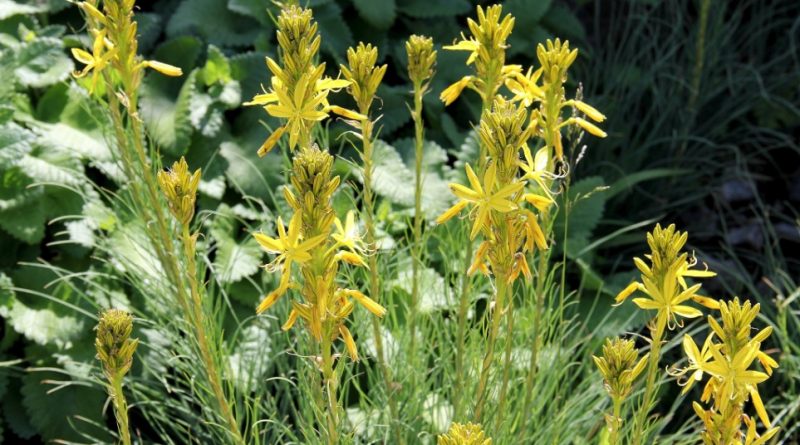Asphodeline lutea
Asphodeline lutea
The king’s spear (Asphodeline lutea (L.) Rchb.) Is a perennial herbaceous species belonging to the Liliaceae family.
Systematic –
From a systematic point of view, it belongs to the Eukaryota Domain, Plantae Kingdom, Magnoliophyta Division, Liliopsida Class, Liliales Order, Liliaceae Family and therefore to the Genus Asphodeline and to the Species A. lutea.
The term is synonymous:
– Asphodelus luteus L .;
Etymology –
The term Asphodeline is the diminutive of the genus Asphodelus to which this plant resembles small.
The specific lutea epithet comes from yellow lúteus: yellow in color.
Geographical Distribution and Habitat –
king’s spear is a plant native to south-eastern Europe, northern Africa, the Caucasus and the Levant.
Its habitat is that of the arid and stony slopes where it grows in the altitude range between 0 and 1700 meters above sea level.
Description –
The Asphodeline lutea is a perennial, rhizomatous geophyte, ranging in size from 50 to 100 cm.
The stem is erect, robust, cylindrical, greenish in color, leafy, without branches.
The leaves are jonquiform, green in color, along the entire stem, the lower major ones, the upper ones progressively reduced.
The flowers are showy, 2-3 cm, with yellow tepals with a green central line, carried by peduncles to the axilla of lanceolate hyaline bracts with a dark central nerve, gathered in a dense cylindrical raceme.
The antesis is between April and June.
The fruits are loculicidal capsules, ovoids of 19-15 mm, with 3 valves that when ripe open to free the black seeds, with a triangular section, of 4-5 mm, first green, then brown-blackish.
Cultivation –
king’s spear is a spontaneous species that grows in arid and stony environments and therefore also with little availability of agricultural soil.
In some cases it is however cultivated as an embellishment plant.
It is generally a plant with few cultivation needs and that can also be propagated starting from seed.
Uses and Traditions –
king’s spear, as well as this species, have been exploited by various peoples in the past from a food point of view even if to be honest the use of these plants was resorted to in situations of extreme social degradation and poverty.
The yellow Asphodel, as well as the genus Asphodelus, should be considered toxic for the content of mature tubercles in asphodeline, an alkaloid that together with others would be the main responsible for the toxic effects of these plants.
For this reason this plant should not be eaten raw and only immature stems should be collected and eaten.
The animals instinctively leave it out and therefore, like all asphodels, it tends to spread even in the presence of intense pasture. The asphodel is an indicator of environmental degradation.
The parts used are: the tender part of the stems, peeled from the outer sheath, to be used boiled, seasoned with oil and vinegar or lemon, or for risotto, omelettes or other dishes.
The recommended collection period is between April and May.
Preparation method –
The king’s spear is a plant of which, with great care, the tender part of the stems, previously cleaned of the outer sheath, can be used in the kitchen; these must be boiled, seasoned with oil and vinegar or lemon, or prepared in risotto, omelettes or other dishes.
Guido Bissanti
Sources
– Acta Plantarum – Flora of the Italian Regions.
– Wikipedia, the free encyclopedia.
– Treben M., 2000. Health from the Lord’s Pharmacy, Tips and experiences with medicinal herbs, Ennsthaler Editore
– Pignatti S., 1982. Flora of Italy, Edagricole, Bologna.
– Conti F., Abbate G., Alessandrini A., Blasi C. (edited by), 2005. An annotated checklist of the Italian vascular flora, Palombi Editore.
Warning: Pharmaceutical applications and alimurgical uses are indicated for information purposes only, they do not in any way represent a medical prescription; therefore, no responsibility is accepted for their use for healing, aesthetic or food purposes.


